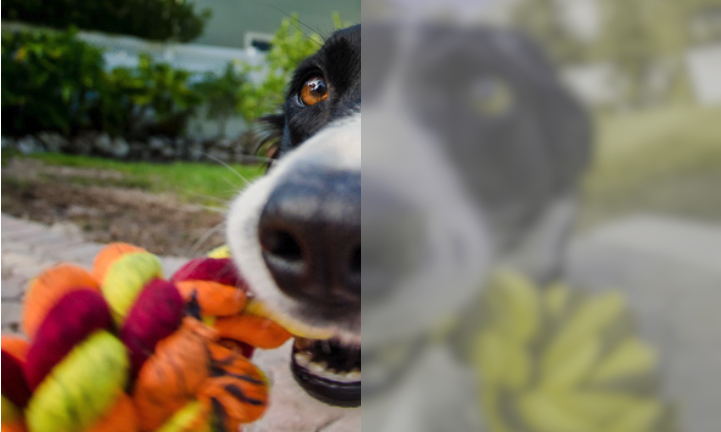Tuesday, 13 December 2022
The Dog Vision

The Dog VISION website pulls off the neat trick of giving you some idea of how dogs see the world. As you probably know, every species of animal has its own particular set of sensory systems through which it perceives not THE world but rather ITS world. Thinkers such as James Gibson (pp. 26-34) and Francisco Varela (pp.191) developed their ideas about this relationship between an animal’s body and its environment in the 1970s and 1980s, drawing on the pioneering work of Jakob von Uexküll and his landmark book A Foray Into the Worlds of Animals and Humans, published in 1934. All of these biologists, psychologists and philosophers (I’m also thinking of Thomas Nagel and his famous paper, “What Is It Like to be a Bat?” ) have warned us against the ready temptation to assume that other species of animals have the same relationship with the world that we do. For example, Varela, who studied colour perception extensively, liked to say that every species “lives in its own chromatic space” and that for any given species, this space is not necessarily optimal, but has simply proven adequate to ensure the survival of that species to the present time.
The Dog VISION website illustrates the truth of Varela’s statement with a spectacular demonstration of just how much worse a dog’s vision is than a human’s. First of all, humans, like other primates, are trichromate, which means that in our retinas, we have three different types of cones, which are sensitive to three different ranges of colour wavelengths in the visible spectrum (red, green and blue). In contrast, dogs have only two types of cones: yellow (which in fact cover what we see as red and green) and blue. As a result, dogs cannot differentiate red, yellow and green when these colours are of equal brightness. But if their brightness differs, then dogs can distinguish them as various shades of yellowish grey.
The other way in which other animals’ vision differs greatly from our own is in their visual acuity, which can be 4 to 8 times worse than ours, depending on the species. In contrast, the visual acuity of raptors is among the best in the animal kingdom—2 to 8 times better than ours, depending on how it is measured and what species of raptor is concerned.
The most surprising feature of the Dog VISION website is definitely the page where you can upload an image of your choice from the web or from your own computer and then “see it” the way a dog would. Try it yourself with some of your favourite images. You’ll probably end up with a greater appreciation of your own human vision afterward!
The Senses | Comments Closed







